A Methodical Approach to Decluttering Your Home
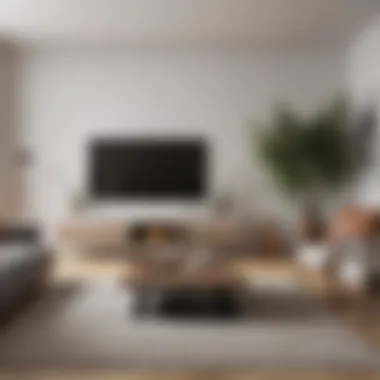
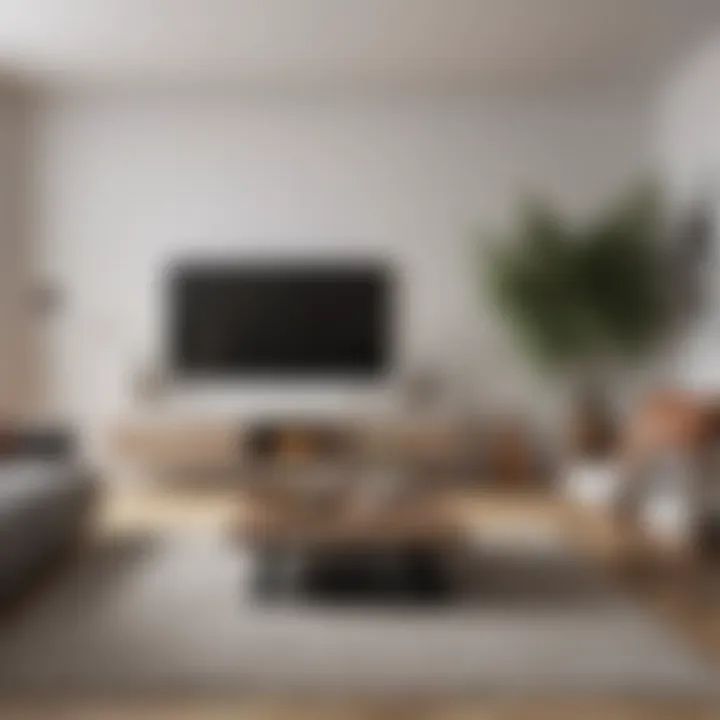
Intro
Decluttering a home is a multifaceted task that often feels overwhelming. However, implementing a methodical approach can transform this daunting chore into a structured process. The connection between psychological well-being and physical space cannot be underestimated; clutter can weigh down our minds and diminish our ability to focus. By recognizing the impact clutter has on our daily lives, we can appreciate the importance of creating an organized environment.
This article will provide an actionable roadmap for decluttering. By dividing the process into manageable steps, individuals can navigate through their possessions with clarity. The insights shared here are designed to resonate with a broad audience, from young professionals looking to optimize small living spaces to retirees who wish to simplify their homes for ease and functionality.
Design Inspirations
Creating a functional and visually appealing space begins with appropriate design choices. When approaching decluttering, consider how your space can inspire you post-declutter. Each individual’s aesthetic will differ, yet certain elements consistently remain appealing.
Trending Styles
Recent trends point towards minimalist designs that embrace simplicity. This style encourages open spaces with fewer distractions. Scandinavian design, characterized by its functionality and natural materials, is increasingly popular. It often utilizes light colors and organic shapes to create a calm atmosphere.
In contrast, bohemian styles celebrate eclectic decor. This involves vibrant textiles, rich colors, and layered patterns. By understanding different design preferences, homeowners can better decide what aesthetic to pursue post-declutter.
Color Palettes
Color greatly influences mood and perception. Warm whites, soft greys, and gentle earth tones are often favored in minimalist designs, as they create a serene backdrop. Alternatively, jewel tones such as emerald green or deep blue can be used selectively to add depth and interest to specific areas of a home.
Incorporating color can be achieved through accent walls or the choice of furniture. Utilizing color psychology can assist in crafting spaces that foster comfort and functionality.
"An organized home is not merely a reflection of orderliness; it can significantly enhance one’s emotional state, productivity, and overall happiness."
Maintenance and Upkeep
Following the decluttering process, maintaining the organized environment is crucial. Regular upkeep ensures that the structure built is sustained over time.
Seasonal Maintenance Checklist
Creating a seasonal maintenance checklist can simplify ongoing organization. Consider noting:
- Purging unwanted items every season.
- Organizing closets and storage spaces in spring.
- Reviewing bookshelves and discarding outdated materials in summer.
- Freshening up garden spaces in fall.
- Making necessary repairs before winter.
Cleaning and Organization Tips
To maintain a tidy home, integrate small daily habits. These habits may include:
- Making the bed each morning.
- Allocating ten minutes daily for tidying up.
- Establishing ‘homes’ for items to avoid clutter accumulation.
- Designating specific days for deep cleaning.
By adopting actionable habits, sustaining an organized living space becomes achievable.
Decluttering and maintaining your home is an evolving journey, one that pays dividends in both psychological and physical space. The benefits extend beyond aesthetics, allowing for improved functionality in everyday life.
Understanding Clutter
Clutter is a common concern for many homeowners. It affects not only physical spaces but also mental well-being. Understanding clutter involves recognizing what constitutes clutter, grasping its psychological implications, and identifying triggers that lead to accumulation. By delving into these elements, we gain the ability to address clutter effectively and foster a more organized life.
Defining Clutter
Clutter can be defined as a collection of items that are disorganized, excessive, or unwanted in a particular space. It extends beyond mere physical objects. Clutter encompasses items that do not serve a clear purpose or those that fail to contribute positively to one's life. This may include anything from old clothing and unused furniture to stacks of papers and digital files that clutter our devices. The key aspect of clutter is its ability to obstruct functionality and promote feelings of chaos.
Psychological Impact of Clutter
The presence of clutter in one's living environment has significant psychological effects. Studies indicate that clutter can lead to increased stress, anxiety, and even reduced mental clarity. This happens because excess items can overwhelm the mind, making it harder to focus or relax. It may also diminish motivation, as the cluttered space can feel unwelcoming and unmanageable. Addressing clutter is, therefore, not just about cleaning physical space but also about restoring mental order and well-being.
Identifying Personal Clutter Triggers
Each individual has unique triggers that contribute to clutter accumulation. Recognizing these triggers is essential for effective decluttering. Common triggers include:
- Sentimental attachments: Objects tied to personal memories often lead people to hold onto items longer than necessary.
- Shopping habits: Impulsive buying can result in a surplus of items that one may not truly need.
- Busy lifestyles: A hectic schedule can leave little time for organization, allowing clutter to build up.
By identifying what specifically leads to clutter in one’s own life, a personalized plan can be developed to manage these triggers more effectively. This creates a proactive approach to maintaining a clutter-free environment.
Preparation for Decluttering
Preparation for decluttering is a crucial step in the overall process. It serves as the groundwork for effective organization and simplifies the task ahead. Without proper preparation, one may feel overwhelmed. This can lead to a lack of progress and ultimately, a return to clutter. A thoughtful strategy not only enhances efficiency but also ensures a more satisfying experience during the decluttering approach.
Setting Clear Goals
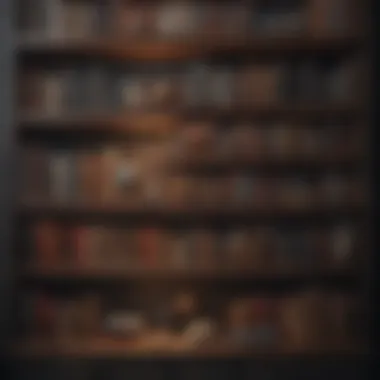

Establishing clear goals sets the tone for the entire decluttering process. These goals can be various, depending on individual needs and preferences. Some might aim to minimize possessions, while others may focus on creating a more functional living space. Clarity in goals helps maintain motivation throughout the journey.
When setting goals, it is beneficial to use the SMART criteria. This means goals should be Specific, Measurable, Achievable, Relevant, and Time-bound. For instance, instead of saying, "I want to reduce clutter," a more refined goal could be, "I will donate five bags of clothing by the end of the month." This specificity fosters accountability and keeps the decluttering process manageable.
Creating a Decluttering Schedule
Creating a decluttering schedule plays a vital role in ensuring consistent progress. It is essential to allocate specific times for each decluttering session. A well-structured schedule breaks the process into manageable chunks, preventing the feeling of being overwhelmed.
Consider a weekly or bi-weekly plan, dedicating short periods to focus on specific areas of your home. For example, weekends could be reserved for bigger areas, such as the garage or attic, while weekdays might focus on smaller spaces like drawers or closets. The key is to be realistic about the time you can commit.
Some may find it helpful to use a calendar or a mobile app to track their progress. Regular review periods can help in reassessing goals and adjusting the schedule as needed.
Gathering Necessary Supplies
Before diving into decluttering, gathering supplies is essential. Having the right tools on hand can streamline the process. A few basic items can significantly enhance efficiency and organization.
Supplies to consider include:
- Boxes or Bins: Different ones for sorting items into categories like keep, donate, recycle, and discard.
- Trash Bags: For items that are no longer usable or needed.
- Markers: Use to label boxes or bins clearly.
- Cleaning Supplies: A simple cloth or all-purpose cleaner to freshen up spaces as you go.
- Measuring Tape: In case you need to consider new storage solutions.
Having everything ready allows you to focus solely on the task at hand, avoiding interruptions that could derail your momentum.
"Preparation before decluttering allows for a smooth transition toward a more organized living space, making the entire experience less stressful."
Implementing the Decluttering Process
Implementing the decluttering process is crucial to achieving a clean and organized home. This process involves several stages that require commitment and intention. Its purpose is not merely aesthetic; it impacts functionality, mental clarity, and overall well-being. By knowing how to properly implement decluttering practices, homeowners can transform their living spaces into environments that reflect their needs and sense of style.
A strategic approach renders the task manageable. This ensures that decluttering doesn’t feel overwhelming. Adopting a systematic methodology paves the way for long-term sustainability. When individuals understand the steps involved, they can maintain their organization without reverting to previous habits. Moreover, implementing these techniques greatly encourages mindfulness and intentionality in daily life.
Room-by-Room Approach
The room-by-room approach is an effective method to tackle clutter. Rather than trying to declutter the entire home at once, focusing on one area makes progress more achievable. This method helps homeowners maintain their momentum. By seeing tangible results in each room, motivation increases. It breaks down the daunting task into smaller, more manageable sections. Additionally, rooms often contain different types of clutter, necessitating tailored strategies for each space.
Before starting, it is advisable to create a plan for which rooms to declutter first. Areas like the living room or kitchen, where clutter often accumulates, may be priorities. Documenting progress offers encouragement and can provide a sense of accomplishment.
Utilizing Sorting Techniques
A well-organized sorting technique simplifies the decluttering process. This involves categorizing items into groups which makes decision-making easier. Common sorting categories include "Keep," "Donate," "Recycle," and "Discard."
Keep
The "Keep" category signifies items that are essential or hold significant value in daily life. This is fundamental because it contributes to a sense of stability and comfort in one's home. Identify items that support personal needs and actively enhance living space. However, it is essential to critically assess what truly belongs in this category, as too many items can lead to the same clutter issues.
Donate
The "Donate" category has both altruistic and practical implications. Donating is beneficial as it allows others to benefit from items no longer needed, fostering a sense of community. This choice can also free up valuable space. Donating reaches beyond just a decluttering effort; it serves as a conscious act of sharing resources. Nonetheless, guidelines should be followed on what can be accepted by charitable organizations to prevent unintentional clutter in the donation process.
Recycle
Recycling is pivotal in sustainable decluttering practices. This category includes items that cannot be reused but can be processed for materials. By recycling, individuals contribute to environmental conservation efforts. Choosing to recycle reduces landfill waste and optimizes the use of natural resources. However, awareness of local recycling regulations and guidelines will assure that recycling is done correctly and effectively.
Discard
The "Discard" category is set for items that cannot be reused in any form. This is generally seen as a last resort, so careful evaluation is necessary. Discarding effectively clears out truly unneeded items; this is crucial in the decluttering process. Homeowners should make informed decisions on what to discard but ensure that discarded items don’t contribute to additional waste problems. Understanding the proper disposal methods is essential here.
Handling Difficult Items
Often, decluttering encounters emotional roadblocks, especially with items that carry nostalgia or memories. Handling difficult items requires a thoughtful approach, incorporating principles of mindfulness and intentionality. Judgment must be suspended as individuals assess the significance of each item in their lives. This process supports better emotional health and aids in moving forward with a streamlined living space.
"The journey of decluttering is not only physical but also emotional, fostering a deeper connection with what we choose to keep in our lives."
Remember, each step in the decluttering process is about creating a living space that nurtures personal growth and functional design.
Sustainable Decluttering Practices
Sustainable decluttering practices focus on reducing waste and ensuring that items no longer needed are disposed of in an environmentally friendly manner. As society becomes more eco-conscious, it is essential to approach decluttering with the environment in mind. Using sustainable methods not only minimizes waste sent to landfills but also promotes a sense of responsibility and awareness around consumption habits. This practice resonates particularly with homeowners who wish to contribute positively to their surroundings while maintaining a clean and organized living space. By committing to sustainable decluttering, individuals foster a lifestyle that prioritizes sustainability and mindfulness.
Eco-friendly Disposal Methods
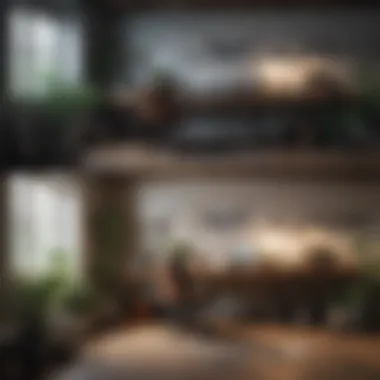

When decluttering, consider where your unwanted items will end up. Eco-friendly disposal methods are about finding responsible ways to handle items that cannot be kept, donated, or repurposed. Some options include:
- Recycling: Many household items, like plastic containers, glass bottles, and metal cans, can be recycled. Check local recycling guidelines to understand what materials are accepted.
- Composting: Organic waste, such as food scraps and yard waste, can be composted instead of being thrown away. This method reduces waste and enriches soil.
- Hazardous Waste Facilities: Items like electronics, batteries, and chemicals require special disposal. Look for local hazardous waste collection events to ensure these items are handled properly.
Using these methods helps reduce your carbon footprint and promotes a healthier environment for future generations.
Charitable Donations
Donating items is a practical way to declutter while contributing to a good cause. Charitable organizations welcome various goods, including clothing, household items, and furniture. Here are key points to consider:
- Finding Local Organizations: Research local charities, thrift stores, or shelters that accept donations. Popular organizations include Goodwill and The Salvation Army.
- Assessing Item Condition: Only donate items that are in good condition. This way, you support others without passing on clutter.
- Tax Deductions: Keep receipts for donated items. They can often be used as tax deductions, providing financial benefits alongside decluttering.
Donating not only declutters your home but also aids those in need, allowing them access to usable resources.
Creative Repurposing Ideas
Sometimes, items that are no longer needed can be repurposed into something functional and aesthetically pleasing. Creative repurposing minimizes waste and injects fresh life into forgotten items. Here are some ideas:
- Furniture Upcycling: Old furniture can be transformed with paint or new hardware. A worn-out dresser can be converted into a stylish storage solution.
- Using Glass Jars: Empty jars can be used for organizing small items, such as office supplies or kitchen ingredients, instead of tossing them.
- Fabric Scraps: Old clothes can become dish rags, pillow stuffing, or even be woven into new fabric items.
Engaging in creative repurposing encourages innovative thinking about possessions and highlights the value in what may otherwise be discarded. It is a sustainable solution that reflects resourcefulness.
"Embracing sustainable decluttering practices not only creates a more organized home but also enriches the community and environment. Together, these actions contribute to a conscious lifestyle supporting both personal and global sustainability."
By integrating sustainable practices into decluttering routines, individuals can achieve a lasting positive impact on their home and the world.
Maintaining an Organized Home
Maintaining an organized home is essential for ensuring a functional and pleasant living environment. An organized space not only enhances aesthetics but also promotes mental clarity and reduces stress. This section focuses on how to sustain the order achieved during the decluttering process. Keeping an organized home enables you to enjoy your sanctuary, allowing for better focus on your daily activities and hobbies. The effort put into establishing a tidy environment pays off as it fosters productivity and a sense of accomplishment.
Establishing Daily Habits
Daily habits play a vital role in maintaining an organized home. Consider incorporating small tasks into your routine that promote tidiness. For example, a few minutes each day dedicated to straightening up can prevent clutter from accumulating. Simple practices such as:
- Putting items back in their designated places after use
- Wiping down surfaces each evening
- Setting aside a specific time to tidy up certain areas
By making these behaviors part of your daily life, the home will remain organized and inviting. The key is consistency; establishing routines creates a foundation that supports a clutter-free environment.
Regularly Scheduled Decluttering Sessions
Setting a schedule for decluttering is another powerful method to maintain organization. This does not necessitate lengthy sessions; rather, short, focused intervals can be highly effective. Plan these sessions weekly or monthly, depending on your needs. Benefits include:
- Preventing the Build-Up of Clutter: Regular intervals help ensure that less clutter accumulates, making it easier to manage.
- Re-evaluating Items: Regular sessions allow you to assess items and determine if they still serve a purpose in your life.
- Creating a Sense of Control: This prevents feelings of being overwhelmed, as reliance on regular maintenance reduces urgency or stress.
Utilizing Storage Solutions
Effective storage solutions are crucial in an organized home. They provide a structured way to store items without leading to chaos. Explore different options tailored to your needs:
- Baskets and Bins: Useful for grouping items that belong together, keeping similar objects in one place.
- Shelf Organization: Using dividers or labeled containers can help segment items and improve accessibility.
- Vertical Space: Maximize the use of walls with shelves, hooks, or pegboards, which frees up floor space and enhances organization.
Psychological Benefits of Decluttering
Understanding the psychological benefits of decluttering is essential in recognizing how an organized space can enhance overall well-being. Decluttered environments not only provide a clearer physical space but also foster mental tranquillity. This section will discuss three significant psychological gains that often arise from a methodical decluttering process: enhanced mental clarity, reduced stress levels, and improved productivity.
Enhanced Mental Clarity
A cluttered home can lead to a cluttered mind. When surrounded by disarray, it becomes increasingly difficult to focus and think clearly. Neurologically, our brains can only process a certain amount of information at a time. Excess clutter adds unnecessary distractions, which can hinder decision-making abilities. When decluttering occurs, this cognitive overload diminishes.
By creating an organized space, you allow your mind the freedom to prioritize thoughts and make decisions more effectively.
- Organized Spaces
An organized space promotes easier navigation through daily tasks, allowing individuals to find items as needed consistently. - Clear Focus
This enhanced focus can translate directly into both personal and professional domains. Individuals often report feeling more relaxed and more centered in an organized environment.
Ultimately, decluttering leads to a more serene and focused mindset, enabling better engagement with one's surroundings and tasks.
Reduced Stress Levels
The presence of clutter can be a subtle yet pervasive source of stress. Studies suggest that chaotic environments can elevate cortisol levels, the hormone responsible for stress reactions. When decluttering, individuals often experience immediate relief from the burdens of untidiness.
Taking steps to organize one's living space not only eases physical strain but also leads to emotional benefits.
- Visual Calmness
A less cluttered environment is easier on the eyes and mind, providing a calming visual experience. This effect can contribute to feelings of control and well-being, decreasing anxiety. - Routine Establishment
Establishing routines around decluttering can create a sense of accomplishment and stability, further promoting steady mental health.
Reduced clutter can result in a drastically lower stress response, proving beneficial for emotional resilience and overall quality of life.
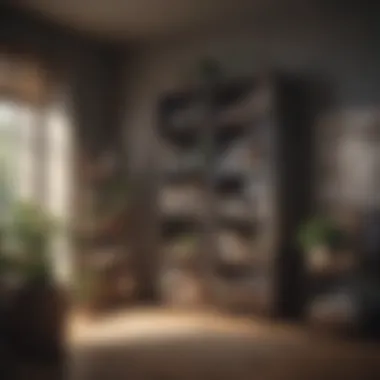
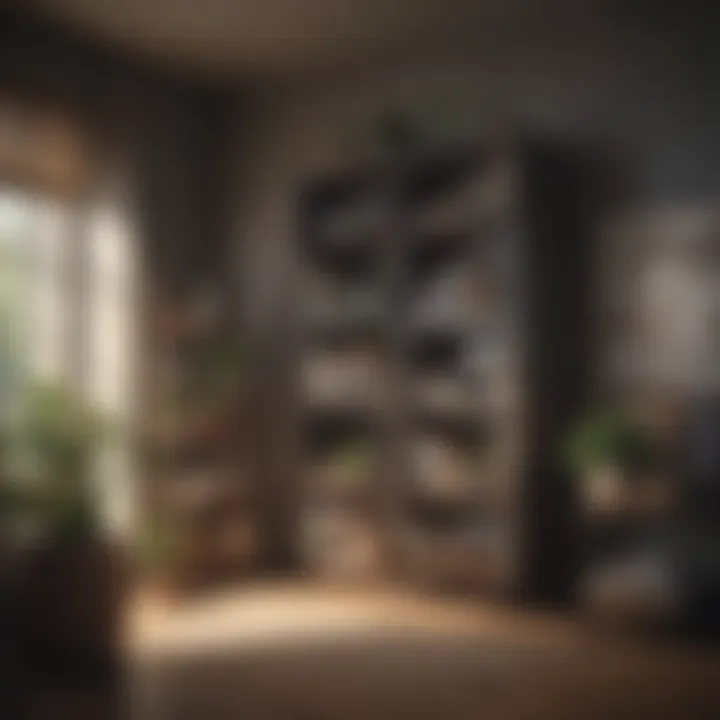
Improved Productivity
Decluttering can also create the conditions necessary for improved productivity. A clean and organized space encourages efficient work habits and heightens motivation.
Individuals are often more likely to complete tasks in an environment that supports focus and creativity.
- Enhanced Workflow
When items are organized, workflows become streamlined. Finding documents, tools, or supplies becomes quicker, which saves time and reduces frustration. - Goal Achievement
Moreover, a clear space can inspire clearer thinking regarding goals and ambitions. The act of decluttering inherently involves setting priorities, which can positively influence productivity levels.
In summary, the psychological benefits of decluttering resonate deeply within our daily lives. The journey is not solely about physical organization but enhances clarity, reduces stress, and fosters productivity. Recognizing these psychological aspects can motivate homeowners, designers, and anyone engaging with their space to embark on the decluttering process with renewed intention.
Emotional Considerations in Decluttering
Decluttering is not merely a physical task; it also demands emotional engagement. The emotional considerations in decluttering are pivotal to understanding what prompts individuals to hold onto items that may no longer serve a purpose in their lives. Recognizing and addressing the emotional aspects can lead to an effective declutter process. By shedding emotional weight, one can create a more supportive and organized environment.
Nostalgia and Attachment to Objects
Many people have strong attachments to their belongings. Nostalgia plays a significant role in this attachment. Items can elicit memories or represent significant life moments. For instance, a childhood toy or a gift from a loved one can evoke deep feelings that make it difficult to let go. This emotional connection often causes anxiety during the decluttering process. To address this, it is crucial to differentiate between items that enhance one’s life and those that merely fill space.
When facing nostalgia, consider taking pictures of cherished items before letting them go. This way, you can preserve the memory without needing the physical object. Additionally, try creating a dedicated space for sentimental items. This allows for appreciation without cluttering your living space.
Overcoming the Fear of Letting Go
Fear is a common barrier to decluttering. It can stem from worries about needing an item in the future or the potential regret of parting with it. This fear can be paralyzing, leading to inaction and continued clutter. To overcome it, it’s important to reflect on the following points:
- Ask yourself if the item serves a current purpose.
- Consider the actual likelihood of needing the item again.
- Evaluate the emotional burden versus the potential relief of a decluttered space.
Creating a decluttering strategy can also help alleviate fear. Start small. Tackle one drawer or one room at a time. Gradually, the process becomes less intimidating. Remind yourself that letting go can open space for new experiences and opportunities.
Cultivating a Mindset of Acceptance
Acceptance is a key element in the decluttering journey. Accepting that change is a natural part of life can help ease the emotional process. Items may hold sentimental value, but if they do not add joy or utility, it is time to acknowledge their limited role. Cultivating a mindset of acceptance requires both patience and practice.
To foster this mindset, practice gratitude for the experience each item provided. Consider creating a "gratitude list" of items you appreciate before letting them go. This approach helps reinforce the positive memories associated with each item while allowing for their release.
Your journey towards decluttering should focus on what truly matters. Embracing a mindset of acceptance can transform not just your physical space but also your emotional well-being.
Case Studies: Successful Decluttering Stories
Examining real-life examples of successful decluttering can provide valuable insights into the process. Each story brings forward unique elements that cater to diverse needs and perspectives. Understanding how different individuals have tackled clutter in their lives can offer relatable approaches and inspire others.
The importance of these case studies extends beyond mere examples. They demonstrate that decluttering is not a one-size-fits-all journey; rather, it is shaped by personal circumstances, emotional attachments, and individual priorities. Successful decluttering stories highlight how varying demographics can adopt different strategies according to their specific environments. These narratives also shed light on the benefits achieved post-decluttering, such as increased space, improved mental clarity, and enhanced well-being. Their relevance in this guide cannot be understated, as they emphasize actionable takeaways that readers can apply to their own situations.
Diverse Demographics and Approaches
Through the lens of diverse demographics, successful decluttering stories reveal how age, lifestyle, and cultural background influence personal approaches to managing clutter. For instance, a young adult living in a small apartment may prioritize minimalism to maximize limited space. In contrast, a retiree may face emotional challenges linked to downsizing accumulated belongings.
- Young Adults: Often face the challenge of integrating new lifestyles and habits while navigating small spaces. Their stories may showcase how they have embraced minimalism or functional furniture to create orderly environments.
- Families: Families with children provide case studies on strategic organization. They highlight methods such as creating designated spaces for toys or laundry, emphasizing family involvement.
- Seniors: Stories from older individuals often highlight the emotional struggle of letting go. They may share experiences of sorting through decades of memories, drawing attention to techniques that helped them part with items.
By analyzing these diverse experiences, readers can glean insights into varying methodologies and find inspiration that resonates with their context.
Before-and-After Comparisons
The visual and descriptive impact of before-and-after comparisons cannot be overlooked. These comparisons serve as tangible evidence of the benefits of decluttering. They illustrate the dramatic transformation that spaces can undergo when clutter is effectively managed.
- Visual Impact: Case studies often feature before-and-after photos. Viewers can witness the physical change—dark, cramped rooms evolving into bright, airy spaces. This can motivate potential declutterers to envision the possibilities for their own homes.
- Emotional Relief: Alongside the physical changes, testimonials from homeowners often detail the emotional liberation that follows successful decluttering. Clients might express feelings of lightness, peace, or motivation after clearing out clutter. This dual transformation—both physical and psychological—reinforces the narrative that decluttering enhances quality of life.
"Decluttering does not only change the appearance of a room; it reshapes how we feel within it."
Recognizing the transformative effects through these cases can motivate individuals to take the plunge into their own decluttering journey. Documenting these changes can also empower others to realize that the work is worth the reward.
Culmination: The Long-Term Impact of Decluttering
Decluttering serves more than just an immediate change to the home’s physical space. It creates a foundation for lasting transformation in how one interacts with their environment. As readers reflect on their personal decluttering journey, it is crucial to recognize the ongoing benefits.
Reflection on the Process
The act of decluttering is transformative. Initially, it demands a significant investment of time and emotional energy. However, the process incites a powerful internal shift. Individuals often discover they possess a clearer perspective on what is essential in their lives.
This reflection often results in increased mindfulness around consumption habits and personal belongings. A well-organized space quiets mental chatter, allowing for greater focus and creativity. Decluttering fosters a sense of accomplishment—one that reinforces positive behaviors. It embeds a commitment to maintaining order, thus enhancing overall well-being.
Future Considerations for Living Spaces
Thinking ahead is paramount. Once decluttering is complete, maintaining the clarity gained through this process is key. It is essential to establish practices that support long-term organization.
- Regular Evaluations: Periodically assess items in your space. This helps prevent the accumulation of unnecessary clutter in the future.
- Mindful Consumption: Embrace a strategy of intentional purchases. This means weighing the necessity and value of each new item before bringing it into your home.
- Adapting to Life Changes: As life evolves—be it through family growth, career shifts, or personal changes—so too must your environment. Adapt your living space accordingly to support these transitions effectively.
Sustainable management of your living environment is a vital aspect of a fulfilling life.







